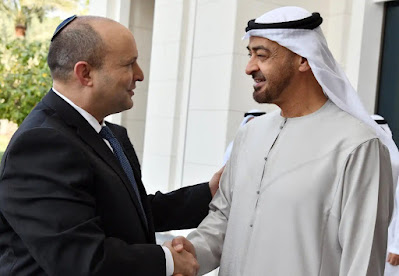The Changing Middle East Offers New Diplomatic Templates with Asia - UAE, India and Israel leading the way
Amid the debate surrounding the changing global landscape and future of diplomacy in a Covid- and post-Covid world, a 2021 announcement by the United States, United Arab Emirates, India, and Israel offers a new template. This new grouping is expected to hold their first in-person meeting of foreign ministers in March 2022, which will focus on collaborating in technology and infrastructure projects, enhancing political and economic cooperation, and maritime security issues.
While recent more tentative diplomatic templates in the region like the UAE’s and Saudi recalibration bids with Qatar, Turkey and Iran, are focused on tension management, the most promising is the ‘partnership for the future’ also referred to as the ‘new quad’. However, this nomenclature is misleading. This US-UAE-India-Israel bloc, unlike the original quad is rooted in increasing regional cooperation, rather than competition with China.
The visit of Israeli Prime Minister Naftali Bennett to Abu Dhabi and the impending visit of Indian Premier Narendra Modi may not have been deliberately scripted but they are furthering the collective interests of this new grouping. Further, they hold the promise of opening potentially new opportunities with their common strategic partners, especially in Asia.
While the United States is the chief unifier in the club, the three others in this group are striving ‘middle powers’. India’s ‘strategic’ ambition gels well with that of ‘startup’ Israel and ‘scale-up’ UAE. They are capable of forging their own trilateral partnerships and expanding them into other ‘minilateral’ or ‘plurilateral’ mechanisms, with their partners, especially Japan and South Korea, among others.

Comments
Post a Comment